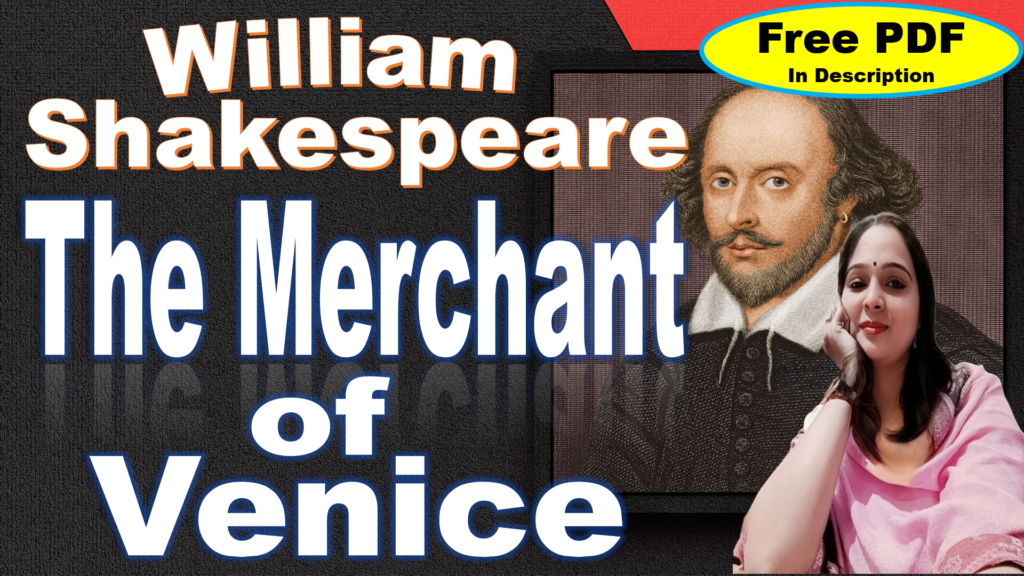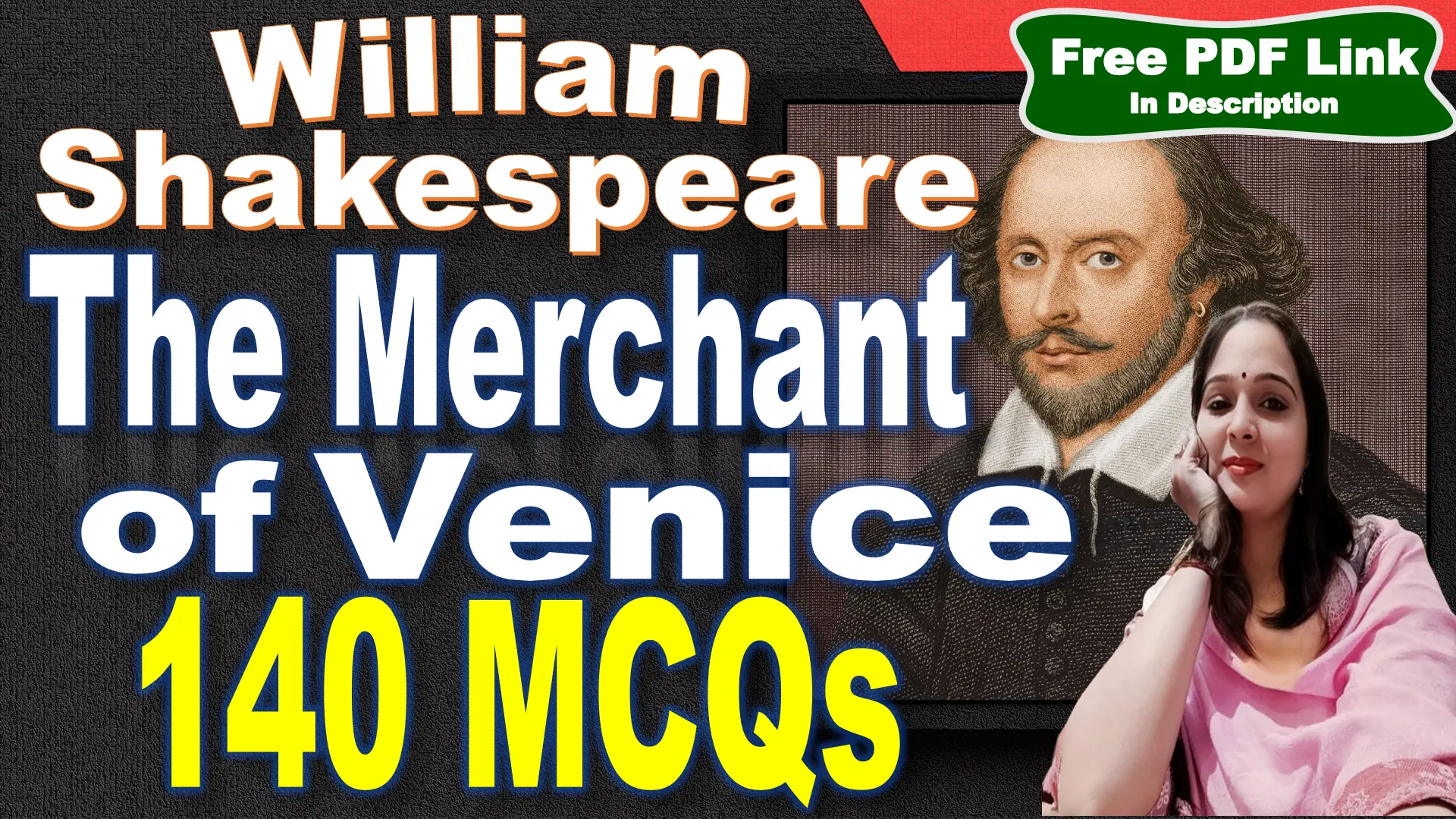
Theme of the Play Merchant of Venice
The Merchant of Venice by William Shakespeare is a rich tapestry of themes that explore various aspects of human experience and societal norms. Here are some of the key themes:
1. Justice and Mercy
Justice: The play prominently features the legal battle between Shylock and Antonio, focusing on the strict interpretation of justice. Shylock demands a pound of flesh as stipulated in the bond, while the court’s handling of the case raises questions about the nature of justice.
Mercy: Portia’s famous courtroom speech on mercy contrasts with the harsh application of the law. The theme underscores the tension between legal justice and moral compassion.
2. Prejudice and Discrimination
Religious Prejudice: The play examines the animosity between Christians and Jews, with Shylock facing discrimination and prejudice from Christian characters like Antonio. This theme is explored through personal insults, stereotypes, and social exclusion.
Social Discrimination: Beyond religious conflict, the play also touches on broader themes of social status and discrimination, such as the treatment of Shylock versus the Christian characters.
3. Love and Friendship
Romantic Love: The play explores different forms of romantic love through the courtships of Portia and Bassanio, as well as Jessica and Lorenzo. The contrast between their relationships reveals varying attitudes towards love and marriage.
Friendship: The bond between Antonio and Bassanio is central to the play, with their friendship tested by Antonio’s financial troubles and the demands of the bond with Shylock.
4. Money and Materialism
Economics and Usury: The play delves into the role of money in society, focusing on the practice of usury and the economic rivalry between Shylock and Antonio. The tension between mercantile values and ethical considerations is a key conflict.
Materialism: Characters’ motivations are often driven by financial considerations, whether it’s Shylock’s quest for revenge or Bassanio’s pursuit of Portia’s wealth.
5. Appearance vs. Reality
Disguise and Deception: The use of disguises and deceptions plays a significant role, especially in Portia’s disguise as a male lawyer. This theme highlights the disparity between outward appearances and inner realities.
Judgment and Perception: The play also explores how characters judge each other based on appearances and preconceived notions, often leading to misunderstandings and conflicts.
6. Mercy vs. Vengeance
Shylock’s Revenge: Shylock’s desire for revenge against Antonio drives much of the plot, contrasting with the Christian values of forgiveness and mercy. His insistence on the bond’s terms versus Portia’s plea for mercy emphasizes the conflict between retribution and compassion.
Antonio’s Mercy: The play examines whether true mercy can exist within a system that also demands justice, highlighting the complexities of balancing personal feelings with moral principles.
7. Identity and Conversion
Religious Identity: The forced conversion of Shylock to Christianity at the play’s end raises questions about identity and the pressure to conform to dominant religious and social norms.
Personal Identity: The theme of personal identity is also explored through the various disguises and mistaken identities that drive the plot.
These themes interweave to create a multifaceted exploration of human nature, societal values, and personal ethics, making The Merchant of Venice a complex and enduring work.
STYLE
1. Comedy vs. Tragedy
Comedy:
Marriage and Love: The play includes traditional comedic elements such as the successful resolution of romantic entanglements. The three marriages of Portia and Bassanio, Nerissa and Gratiano, and Jessica and Lorenzo are integral to its comedic structure.
Happy Endings: By the play’s end, the couples are reconciled and married, which aligns with the Elizabethan notion of comedy.
Disguises and Deception: The use of disguises, particularly Portia’s and Nerissa’s, adds a humorous element and creates opportunities for comedy.
Tragedy:
Shylock’s Loss: Shylock’s story, filled with bitterness and loss, contrasts sharply with the comedic resolution. His forced conversion and the loss of his wealth and identity evoke a tragic dimension.
Moral and Social Conflict: The courtroom drama and Shylock’s plight highlight themes of intolerance and vengeance, offering a darker, more tragic perspective.
Problem Play:
Blending of Genres: Some critics categorize The Merchant of Venice as a “problem play” because it merges elements of both comedy and tragedy. Shylock’s suffering and the play’s treatment of justice and mercy introduce complexities that challenge a straightforward classification.
2. Divided Setting
Venice:
Business and Conflict: Represents the harsh realities of commerce, prejudice, and legal disputes. The setting is darker and more complex, reflecting the play’s tensions.
Character Struggles: Antonio’s melancholic state and Shylock’s bitterness reflect the play’s serious and tragic themes.
Belmont:
Love and Harmony: Contrasts with Venice, symbolizing a fairy-tale world of love, music, and light-heartedness. The setting underscores the play’s comedic aspects and the ultimate resolution of conflicts.
3. Use of the Fable
The Caskets:
Moral Lesson: Portia’s father’s test for her suitors reflects a fable-like structure with a moral lesson. The challenge teaches that true worth lies beyond superficial appearances, encapsulated in the phrase, “All that glisters is not gold.”
Fairy-Tale Elements: The use of three magical caskets aligns with fairy-tale traditions, emphasizing the play’s didactic and allegorical dimensions.
4. Intertwined Stories
1. Antonio and Shylock:
Central Conflict: The primary plot revolves around the bond between Antonio and Shylock, with its themes of mercy, justice, and revenge. This serious storyline provides the play’s core dramatic tension.
2. The Casket Challenge:
Humorous Subplot: The challenge to choose the correct casket offers lighter, humorous moments. It contrasts with the darker elements of the main plot and adds a playful tone to the play.
3. Lorenzo and Jessica:
Elopement and Reconciliation: Their story serves as a counterpoint to Shylock’s conflict, exploring themes of love, family, and reconciliation. It highlights the play’s contrasts between personal and societal conflicts.
4. The Rings:
Comic Resolution: The subplot involving the rings serves as a comedic device to resolve the play’s tensions. The trickery and eventual reconciliation of the couples add a light-hearted conclusion to the play.
Shakespeare’s blending of genres, settings, and storylines in The Merchant of Venice creates a rich and multifaceted play that resists easy categorization, engaging with both comedic and tragic elements to offer a complex exploration of human nature and societal values.
Historical Context of the Play Merchant of Venice
1. Jews in England
Early Presence: Jews were present in England as early as 1075, with no official ghettos. They faced restrictions on professions, primarily engaging in moneylending and peddling, and were prohibited from owning land.
Rising Hostility: Anti-Semitic sentiments increased during the twelfth century, partly fueled by the Christian Crusades and heretical persecutions. Jews faced massacres in 1189 and 1190 and subsequent heavy taxation and restrictions.
Expulsion: In 1290, King Edward I expelled Jews from England. Despite this, some Jews lived in England clandestinely, practicing Judaism in secret or publicly converting to Christianity while remaining in limited professions.
2. Jewish Ghetto
Venetian Ghetto: The term “ghetto” originates from Venice, where, in 1516, a separate section was designated for Jews. This area, initially industrial and isolated, required Jews to remain within it at night. Overcrowding led to multi-story buildings, and the ghetto became a symbol of Jewish segregation.
Post-Napoleon: When Napoleon took control of Venice in the eighteenth century, he dismantled the ghetto’s barriers, granting Jews more rights but not full citizenship.
3. Usury
Religious Prohibitions: Charging interest on loans, or usury, was condemned by several major religions, including Islam, Christianity, and Judaism (though Jews could charge interest to non-Jews). This practice was contentious, and the role of Jewish moneylenders often heightened tensions.
4. Gesta Romanorum
Influence on Shakespeare: The Merchant of Venice includes elements derived from the Gesta Romanorum, a collection of stories popular in medieval Europe. The tale of the three caskets, used by Portia’s father to choose a suitor, is one such story that Shakespeare adapted.
5. Italian Renaissance
Cultural Revival: The Renaissance, spanning the fourteenth to seventeenth centuries, marked a revival of classical learning and artistic expression. Italy was at the forefront of this cultural movement, influencing European literature and thought.
Influence on Shakespeare: Italian Renaissance writers like Dante and Petrarch impacted English literature, including Shakespeare’s works. The Renaissance period in England, characterized by significant literary achievements, saw the rise of playwrights like Shakespeare and Christopher Marlowe.





